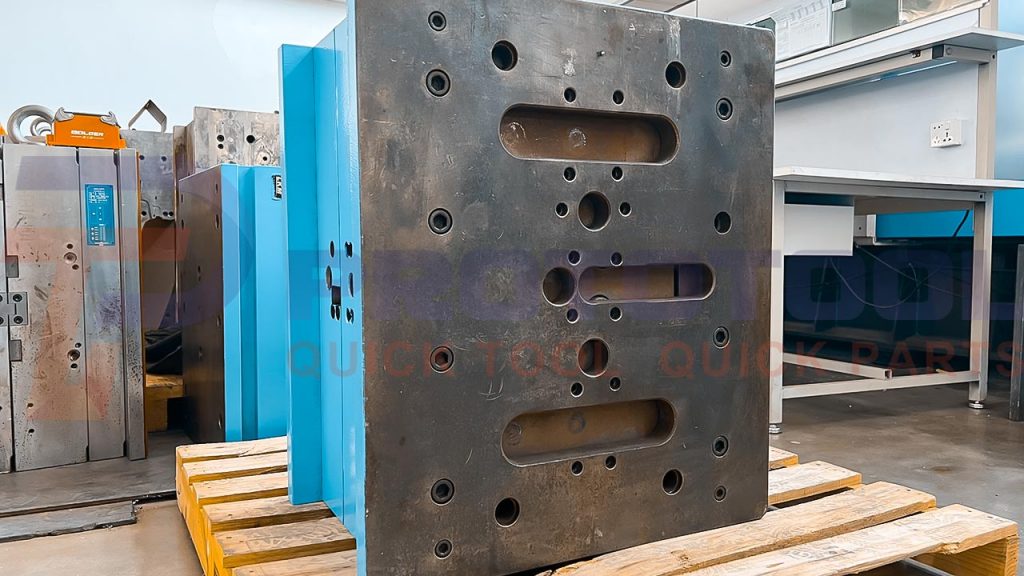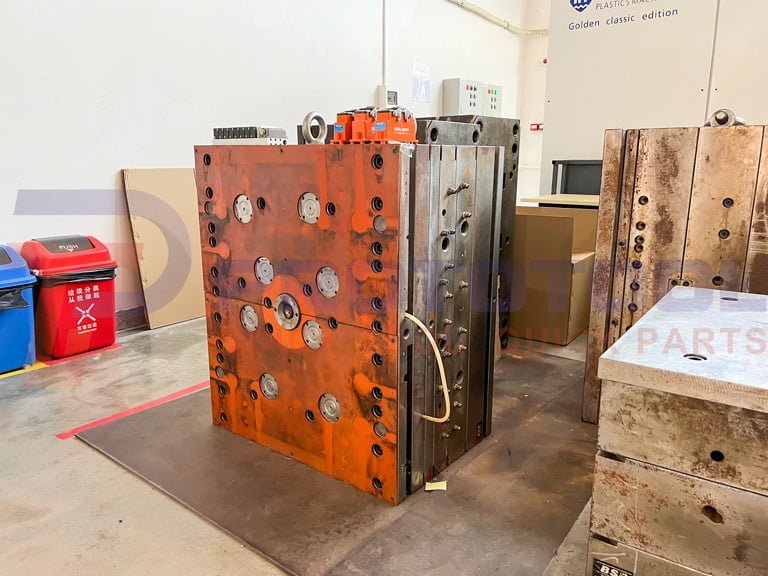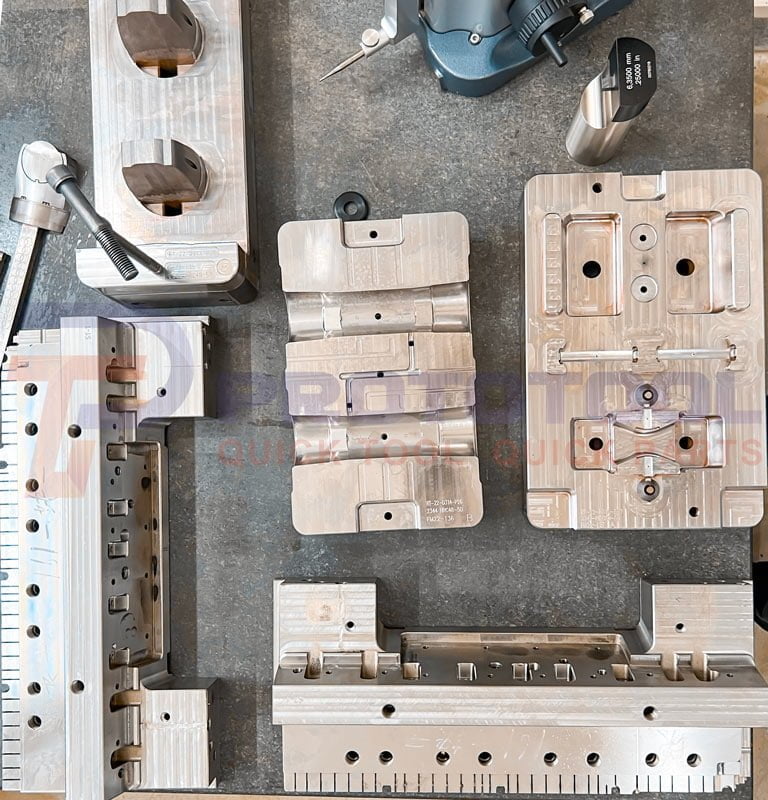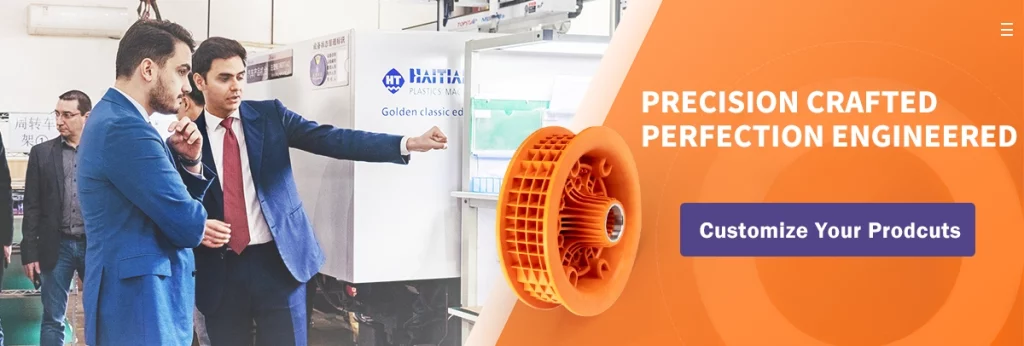If you are a manufacturer or a small business owner, or an enthusiastic entrepreneur eager to ascertain to what extent your business idea or product will be successful and be able to beat your competitors. Then prototype tooling is an ideal method for you to prototype and test your design.

The prototype intends to foresee how your product emerges and functions in actuality. These prototype tooling solutions offer ample benefits for businesses keen to market their ideas swiftly and economically.
Continue reading to discover insightful information about prototype tooling featuring an overview of the technology, different prototype tooling methods, benefits, and industrial applications discussed.
Let’s first see what prototype tooling is.
What is Prototype Tooling?
Prototype tooling, also known as rapid tooling, soft tooling, or prototype mold, refers to a cluster of technologies facilitating the rapid fabrication of tools cheaply and quickly on a slim timeline. It enables the production of parts through low-volume injection molding that functions as tools. Rapid prototyping tools decrease product manufacturing time and cost at a substantial level.
In basic terms, PT is any category of injection mold tooling that is created rapidly at cost-effective rates and facilitates complete analysis, assessment, and validation of your design before mass production.
Many industries prefer rapid tools because they empower manufacturers to identify and streamline defects in the early stages. It also permits the manufacturers to evaluate their choice of the right material. If the tools perform as intended in real applications, then it stamps that we are good to invest in full-scale production.

How Does It Work?
With the emergence of tooling technology as an efficient and faster solution for tooling, different manufacturing methods have been included progressively for rapid prototype tooling productions. Before we move forward, you should clearly know what prototype tooling is, as mentioned above. It’ll help you to understand rapid prototyping tools in an effective manner.
Two kinds of methods are predominantly applied for producing rapid molds, i.e., direct and indirect prototype tooling. Both prototype tooling solutions have their pros and cons and are discussed in detail as follows:
What is Direct Rapid Tooling?
The direct rapid tooling method offers reduced lead time for the entire mold development cycle. Among many of its advantages, the engineering of tools with complex shapes is the exceptional capability that direct tooling offers. This approach is remarkable in producing the cavity mold inserts and actual core.
CNC machining technology is a great option used in direct tool manufacturing. It harnesses computer-aided design (CAD); it’s the digital design of the part. By performing a proficient subtractive process, it can carve your designs out very speedily.
Moreover, 3D printers are the latest induction in direct rapid tooling. It is a great rapid tooling additive manufacturing process by which layers of material are built up to create 3D parts.
Merits of Direct Rapid Tooling
- It offers swift and precise tool production.
- It provides resource savings.
- Flexible and quick with design changes.
- It offers convenient manufacturing.
- It can make numerous prototypes from a single mold or tool.
- It is capable of creating tools with intricate geometries.
Demerits of Direct Rapid Tooling
- It may not be as durable as indirect rapid prototyping tools.
- It may be prone to minor errors.
- In some cases, it can be expensive.
What is Indirect Rapid Tooling?
Indirect rapid tooling solutions employ an intermediary process for mold creation, i.e., the master model. Which is being created using rapid tooling additive manufacturing. Several options come in very handy, but the most frequently used processes for this are soft tooling.
Soft tooling incorporates the application of silicon dies for manufacturing quality plastic products. Additionally, when it comes to casting metal parts, then these silicon molds can be used as templates. Indirect rapid tooling is a very efficient and productive method that fortifies the tools to be reliable and precise for mass production.
Merits of Indirect Rapid Tooling
- It produces robust and reliable tools.
- It offers comparatively cheaper fabrication.
- It’s a very versatile method in terms of creating hard or soft tools depending on demand.
- Indirect tooling is a perfect choice for experimentation and testing.
Demerits of Indirect Rapid Tooling
- It takes more lead time as compared to direct tooling.
- It’s not suitable for making simple parts.

Industrial Application
A huge number of industries employ prototype tooling because of its enormous benefits. The reason being is that the prototype tooling helps to create both metallic and non-metallic molds. Moreover, it helps to make casting shapes and cores. Let us see in detail the major industries that are employing this sophisticated technology:
Aerospace Industry
The aerospace industry is a major player when it comes to benefiting from prototype tooling. The main reason is that this industry often deals with low batch volumes. Moreover, aerospace components are very pricey and involve a very complex design and expensive material. All of it makes rapid tooling an ideal fit for aerospace manufacturing because it is the best technology to handle the aforementioned constraints.
Automotive Industry
One of the prominent industries that use prototype tooling is the automotive industry. The prototyping process in the automotive industry is extremely long and expensive. It often becomes cumbersome at times. Nonetheless, the use of prototype tooling can reduce the time and cost associated with the prototyping process. Because it is faster and produces less waste. Hence, the benefits of rapid tooling in the automotive industry are enormous.
Medical Industry
Another prominent sector is medical parts manufacturing. Medical devices are subjected to intense regulatory compliance. That is why prototype tooling is a lifeguard for this industry. Because it speeds up the production of functional prototypes. This, in turn, speeds up the successful completion of clinical trials of the product. Thus, manufacturers can bring their fully functional and completely safe products to the market faster than their competitors.
In short, prototype tooling solutions are extremely valuable for the manufacturing industries because it is efficient, faster, cost-effective, and an ideal technology to cater to low-volume production.

Advantages Of Rapid Tooling
When it comes to the advantages of rapid prototype tooling, the list is pretty long. Let us take a look at the prominent benefits of this technology:
Promotes Innovation in Manufacturing Sector
One of the major advantages of prototype tooling is that it provides numerous opportunities for innovation in prototype development. This is not the case with conventional tooling. The reason being is that rapid tooling involves complex technological designs which breed technological advancements. Thus, it promotes innovation.
Cost-Effective
Another advantage of prototype tooling is that it reduces the cost of manufacturing. Because conventional manufacturing processes involve longer product development cycles, this equates to an enhanced cost of production. But rapid mold involves a smaller product development cycle. This equates to a reduction in the overall production cost. Thus, rapid prototyping tools can save businesses a lot of money.
Product Design and Performance Testing
Another advantage of prototype tooling is that it provides critical design and functionality testing. Because we can fabricate the tools through this technology in a shorter timeframe, this, in turn, provides more time and freedom to test the existing design and make suitable adjustments accordingly. These early-stage design adjustments will prevent innumerable issues that might arise during the imminent high-volume production stage.
Faster Time to Market
Another defining advantage of rapid prototyping tools is that it cuts the time for the product to enter the market. With the conventional tooling methods, the product development cycle consists of several manufacturing processes and techniques. This increases the time spent on each step and eventually enhances the timeframe between the design stage and the finished product stage.
Prototype tooling, on the other hand, is a whole new ballgame. Because it involves fewer steps as compared to conventional tooling. Moreover, each step requires relatively less time and, resultantly, speeds up the whole manufacturing process. Consequently, the finished product reaches the customers in lesser time. Hence, prototype tooling ensures a faster time to market.
Offers a Great Choice of Materials
One of the most important advantages of rapid prototype tooling is that it allows you to create products with a variety of material grades. Because we can fabricate custom molds quickly using this technology. Then we can produce as many prototypes from this single mold as we require.
Furthermore, we can use different material grades to create the same product and compare their properties as well for research and development purposes. The main benefit of this property is that it allows businesses to check which material grade performs best in real-world scenarios. Thus it allows them to make a correct material selection before launching their product, and that too without altering the production process. Hence, different rapid prototyping solutions allow businesses to test a variety of material grades.
Choose the Best Rapid Tooling Services Providers from China
Are you a manufacturer or a small business owner, or an enthusiastic entrepreneur? Want to test your business idea or product design and its real-world performance in the shortest, quickest, and cheapest manner possible? Then it’s your lucky day! Welcome to Prototool, a globally trusted prototype tooling and mass production services provider from China.
Prototool has one vision – to convert your million-dollar ideas into market-ready, approachable, and valuable products in the blink of an eye. We offer the most dependable, quick, cost-efficient, unique, and adaptive rapid prototyping and mass production services all across China and many other geographies of the world. From the highest-rated materials to the most advanced technological manufacturing solutions, Prototool does it all.
Here at Prototool, we offer the best prototyping services, prototype tooling, impeccable finishing services along with low to medium-volume manufacturing as per the demands of our clients. We incorporate the latest, unbeatable technologies and use the highest-grade quality materials to build your parts.
Just CONTACT US! You’ll be provided with the best possible solution according to your needs and industry type.










